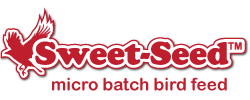The Four Things You Need to Have to Attract More Backyard Birds

Any yard, no matter where it is, how large it may be, what is planted there or how it is maintained, will attract at least some common birds. Sparrows, starlings, doves and pigeons are particularly unbiased about the yards they visit, but if you want a greater variety of more unique feathered guests, it is essential to meet birds' critical needs. If your yard can provide food, water, shelter and nesting sites for many birds, you'll be amazed at the diversity of your backyard flock.
Food
Providing nutritious, reliable food is the best way to attract backyard bids. Many birds range great distances to eat, and if they can find tasty treats in your yard, they will return – and bring their friends. The most bird-friendly backyards will offer multiple foods in multiple ways, such as…
- Natural nectar-bearing flowers and flowering vines for hummingbirds, as well as full, clean nectar feeders
- Seed-bearing flowers such as daisies and sunflowers, with ripe seed heads left intact for birds to enjoy
- Different seed feeders, including large hoppers, open platforms and mesh tubes for different bird sizes and species
- Nuts and nut hearts in specialized feeders or loose in trays or dishes for birds to eat as well as cache
- Fat-rich foods such as suet and peanut butter, especially during winter when birds need extra calories to keep warm
- Mealworms or seed or suet mixes that include mealworms, crickets or other insects for healthy protein
- Bird-friendly fruit trees and bushes, with fruits left for birds to munch in late fall and through the winter
Providing a mix of natural foods and supplemental feeders will attract more birds, and minimizing pesticide use will preserve insects that many birds love to eat as well. The exact foods offered can change throughout the year to meet birds' changing needs, but there should always be different types of food available.
Water
Not all birds visit bird feeders, but they all need water for drinking, bathing, preening and keeping cool. A backyard water source for birds doesn't have to be complicated, but some water options are better than others.
- Any Water Is Good – Even a simple dish of water or stationary bird bath can be helpful for birds, especially in drought-struck areas or anywhere water may be scarce.
- Moving Water Is Better – The sparkles and splashes from a bird bath bubbler, wiggler or dripper will attract even more birds, and will help discourage algae in the bath.
- Flowing Water Is Best – A fountain, stream or waterfall is best for birds, so long as they can still access shallow puddles for easy bathing. This water will also stay clean longer, and will attract many more birds.
The most ambitious backyard birders might include a pond in the yard. If the pond is a healthy part of the backyard ecosystem, even ducks, geese or herons may become regular visitors. Of course, every water source needs to be kept clean and fresh for birds, and even in winter liquid water should be available for thirsty birds to take advantage of.
Shelter
Birds will not regularly visit yards where they feel exposed and vulnerable, and providing safe shelter will encourage more feathered friends to hang out. Planting both deciduous and evergreen trees and shrubs will give birds shelter in any season, and landscaping beds and borders should be tiered so birds can be safely concealed at different levels. Because landscaping can take years to mature, however, there are ways to add immediate shelter to the yard so birds don't have to wait to feel safe.
- Put up roosting boxes or baskets for birds to huddle in on cold nights, or where they can seek shelter from storms.
- Use discarded Christmas trees or pruned branches from around the neighborhood to build a brush pile for instant shelter.
- Pile wood or rocks in haphazard arrangements to leave nooks and crannies birds can use for protection.
- Don't prune existing trees or shrubs too quickly, since the overgrown structure provides more shelter and is more attractive to birds.
At the same time you are providing shelter to birds, remember to leave good perches intact. Birds will sit and peruse their territory, keeping a strict lookout for intruders, competitors or predators. If they have shelter to retreat to when they feel threatened, they will stay nearby much longer.
Nesting Sites
Birds will use the same shelter were they stay safe from poor weather and predators as cozy nesting sites, but there are other tricks you can easily use to attract nesting birds to your backyard. In addition to providing them good landscaping to nest in, try…
- Preserving dead trees, logs and snags that cavity-nesting birds will excavate to make their homes. After those birds move on, other species will reuse the same cavities.
- Adding bird houses and nesting boxes to the yard, taking care to position them safely away from predators, prevailing winds or leaking rain.
- Providing nesting material, including short bits of string, broken broom straws, pet fur, grass clippings, pebbles and mud for birds to build their nests conveniently.
The more thoroughly you meet all birds' survival needs, the more birds you will have visiting your backyard. Start slow with just 1-2 changes at first, and gradually convert your backyard into an amazing bird-friendly sanctuary where any bird can feel at home.
Image by Arvind Telkar from Pixabay
